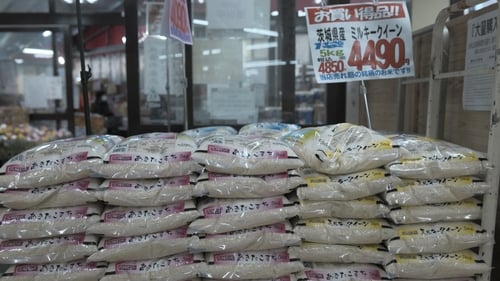News Flash
News Flash

TOKYO, May 23, 2025 (BSS/AFP) - Japanese inflation data released Friday showed that rice prices last month were a whopping 98 percent higher than a year earlier.
AFP looks at the factors behind the sharp increase, which started several months ago, and how it has become a major headache for the government of Prime Minister Shigeru Ishiba.
- Shortages -
Experts say that the main reason for the spike in rice prices is simply because of a shortage of the food staple, which for centuries has been deeply ingrained in Japanese culture.
Factors behind that include a record hot summer in 2023 that hit harvests, followed by a surge in demand in 2024, in part fuelled by panic-buying following a warning of a massive earthquake, which did not materialise.
Unprecedented numbers of tourists hungry for sushi and other foods using rice have also been blamed, as have alleged hoarding by some distributors.
- Falling acreage -
For years, with rice consumption falling, government policy has been to reduce the amount of land used to grow the grain in favour of other crops.
At the same time, in line with Japan's ageing population, many rice farmers are old and their children don't want to take over.
Nearly 90 percent of individual farms are run by farmers over 60, and 70 percent have no successor secured, according to the agricultural ministry.
The amount of land used for rice paddies shrank to 2.3 million hectares (5.7 million acres) in 2024, down from a peak of 3.4 million hectares in 1961.
"The Japanese authorities have long focused on how to reduce the scale of rice production in the name of market control, and they haven't focused on how to increase rice consumption," said Tadao Koike, the third-generation master of a Tokyo rice retailer dating back over 90 years.
"Now we are all dealing with the payback," Koike told AFP.
- Stockpile -
The government started to auction some of its emergency reserves in February, having previously tapped into them during disasters. This is first time since the stores were built in 1995 that supply chain problems are behind the move.
However, as the latest data show, the move has had little impact so far.
Masayuki Ogawa, assistant professor at Utsunomiya University, said this was because the reserve feeds into "blended rice" and not into the more popular branded grains from a particular region or variety.
"In terms of average prices, the price of brand-name rice has risen enough to offset the effect of stockpiled rice pushing down the average price, making it difficult for retail prices in supermarkets to fall even when stockpiled rice is released," Ogawa told AFP.
- Political backlash -
After years of stagnant or falling prices, inflation is now squeezing Japanese consumers and by extension hitting support for the government.
The Liberal Democratic Party (LDP), which has governed almost non-stop for decades, lost its majority last year and had to cobble together a coalition.
And last weekend the farm minister sparked public anger with controversial comments about accessing supplies.
Taku Eto told an event that he "never bought rice myself because my supporters donate so much to me".
Eto resigned but the episode will likely have added to a sense among voters that the LDP -- which faces upper house elections in July -- is out of touch.
Still, Marcel Thieliant, at Capital Economics, said "weekly rice prices are showing signs of stabilisation so rice inflation should start to soften again before long".